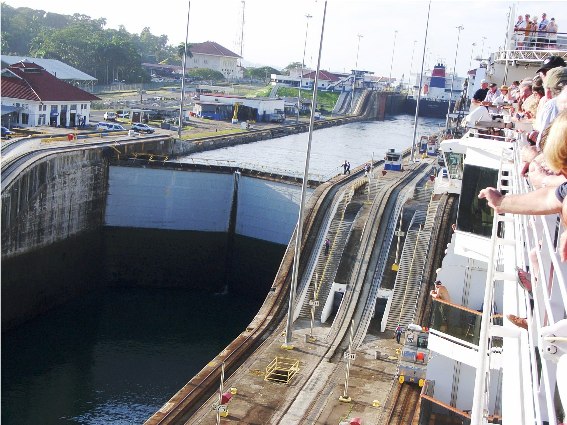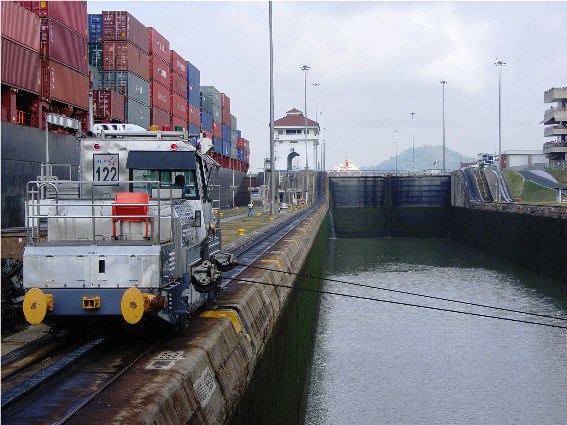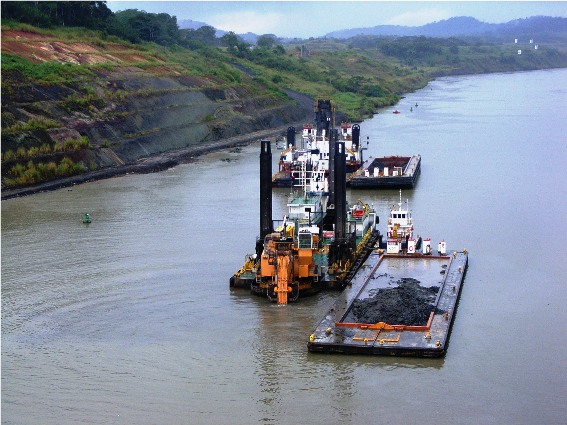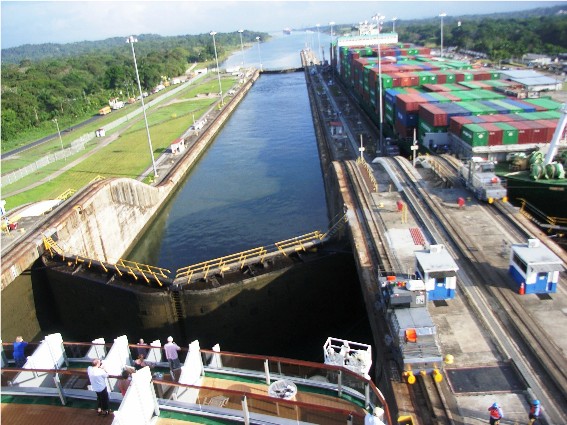Panama Canal
†
The Panama Canal stretches 77km (48 miles) across the Isthmus of Panama and connects the Pacific and Atlantic Oceans. It is one of the largest and most difficult engineering projects ever undertaken.
Originally conceived by the Spanish in 1524 as a way of reducing the time taken in shipping the treasures of the Americas to Spain, it was not until 1881 that the project was started by the French under the supervision of Ferdinand de Lesseps following his success in constructing the Suez Canal. Due to the technical and financial difficulties and the loss of over 25,000 lives due to Yellow Fever and Malaria it was abandoned by the French in 1888. In 1903 they sold their interest to the United States who saw the military advantages in its use and started work on it in 1904.
The canal was originally to be at sea level but the US changed that to the use of locks due to the vast amount of earth that would have needed to be moved and the fact that there is a difference of tide levels between the Pacific and Atlantic Oceans which would have created problems in itsí navigation.
Before work could start it was necessary to eradicate the threat of disease so a mammoth operation was undertaken to do that by William C. Gorgas who eradicated disease along the planned route. A railway was constructed by John F. Stevens to take in the men, materials and machines and to remove the vast amounts of excavated earth. More than 100 million cubic yards of spoil was produced. This was used in the construction of the dam which was to form a Lake, the creation of a breakwater and the reclamation of land from the sea. The remainder was deposited in a dump site in the jungle.
The engineering projects required the damming of the Chagres River to form the 163 square miles Gatun Lake; cutting through the continental divide; and the construction of three sets of locks situated at the towns of Gatun, Pedro Miguel and Miraflores, these were carried out by George W. Goethals.
The locks are designed to lift the ships 26 metres enabling them to sail across the isthmus and lower them down on the other side. Each lock chamber of the three locks is 110 feet wide and 1,000 feet long a size which was determined by the largest American warship, and the largest passenger ship that was to be constructed, the Titanic. The locks gates close in a wide 'V' and are seven feet thick of hollow construction, which gives them buoyancy and reduce the stress on the hinges. The locks work purely on gravity with water being supplied from the Gatun Lake resulting in - each time a ship uses the canal - 52 million gallons of fresh water being emptied into the ocean. A new series of locks are currently under construction to enable larger ships to use the canal and the new locks will incorporate water basins which will reuse the water.
The most challenging part was the construction of the Gaillard Cut (also known as Calebra Cut) this runs from the north end of Pedro Miguel Locks to the south edge of Gatun Lake. Itsí construction involved cutting an 8 mile long channel through the rock and shale of the mountains of the Continental Divide. In the 1990s, the cut was widened to allow the two-way traffic of large vessels through the narrow channel. Due to landslides it is a continuous process of dredging and keeping the canal free from obstructions.
The first complete Panama Canal passage by a self-propelled, ocean-going vessel took place on 7 January 1914 by an old French crane boat, the Alexandre La Valley, although the first official trip was made by the canal cement boat, Ancon; This was a low key affair due to the first world war.
The final cost of construction for the canal was $380 million, which by todayís prices would be $17 billion. Some 13 to 14 thousand vessels use the Canal every year which amounts to an average of 30 a day amounting to approximately 5% of the world trade.




†

†
To see more photographs and take a virtual tour of the site click on the photoshow below.
†
